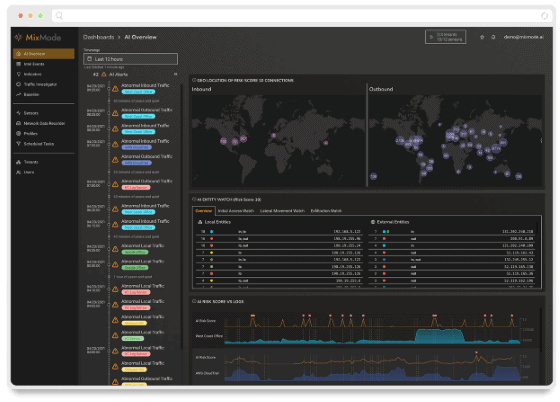Zero-day threats continue to wreak havoc on organizations worldwide, with recent attacks targeting corporate and government networks. In the last few weeks, government-sponsored threat actors have targeted Palo Alto Networks and Cisco ASA (Adaptive SecuritAppliance) and impacted MITRE via Avanti.
What Are Zero-Day (or Novel) Attacks?
A zero-day attack is a cyberattack that takes advantage of a newly discovered vulnerability in software, hardware, or firmware. Since no security patch is available to fix the vulnerability yet, traditional security measures cannot detect it. This allows attackers to launch a surprise attack that can have devastating consequences. Imagine a hidden hole in your castle wall – a zero-day attack is the enemy exploiting that hole before you even know it exists. These cyber-attacks are on the rise due to increased financial gain for cybercriminals, the complexity of modern software, and the growing use of third-party components that can introduce vulnerabilities across multiple systems.
Recent Zero-Day Attacks Targeting Palo Alto, Cisco and MITRE
Palo Alto Networks Zero-Day Vulnerability (CVE-2024-3400):
Palo Alto Networks discovered a critical zero-day vulnerability in its PAN-OS software. The vulnerability, officially designated as CVE-2024-3400, affects newer versions of PAN-OS used in Palo Alto’s GlobalProtect firewall products.
- Severity: Maximum (CVSS score of 10.0).
- Exploitation: Malicious actors have been actively exploiting this bug since March 26, 2024.
- Impact: Unauthorized actors can execute arbitrary code with root privileges on affected firewalls.
- Risk: Thousands of companies relying on Palo Alto firewalls are at risk from intrusions.
- Public Proof-of-Concept: There is publicly available proof-of-concept code that allows anyone to launch attacks exploiting this zero-day.
Attack Details:
- Threat Actor: A government-backed threat actor known as UTA0218 exploited the vulnerability.
- Exploitation Timeline: Evidence of malicious exploitation dates back to March 26, 2024, two weeks before Palo Alto released fixes.
- Backdoor: UTA0218 used the zero-day to plant a backdoor and gain further access to victims’ networks.
- Scope: More than 156,000 potentially affected Palo Alto firewall devices connected to the internet, representing thousands of organizations.
What You Should Do:
- Isolate Vulnerable Firewalls: If feasible, isolate vulnerable firewalls from critical systems on your network. This can help prevent attackers from gaining access to more sensitive resources if they successfully exploit the vulnerability before you patch.
- Increase Security Monitoring: Increase the level of monitoring for suspicious activity on your network. Look for signs of unauthorized access attempts or unusual behavior that might indicate a compromise
Palo Alto Security Recommendations: For any additional recommendations specific to mitigating this vulnerability while patching is underway, refer to Palo Alto Networks Security Advisories.
Government Networks Targeted in Cisco ASA Zero-Day Attack
A recent report by Cisco Talos also revealed a concerning attack targeting Cisco ASA security appliances. State-sponsored hackers exploited two zero-day vulnerabilities (CVE-2024-20353 & CVE-2024-20359) to install backdoors on these devices, potentially compromising government networks worldwide.
What We Know:
- Hackers gained access to government networks through previously unknown vulnerabilities in Cisco ASA devices.
- The attackers aimed to establish backdoors, allowing them ongoing access to compromised systems.
- This attack campaign has been named ArcaneDoor.
What We Don’t Know (Yet):
- The severity of the vulnerabilities (critical, high, etc.)
- The specific method used to exploit these vulnerabilities.
- The full extent of the impact on affected systems.
- The overall risk to users without details on severity and impact.
- Public exploit code allowing anyone to replicate the attack.
- Specific information on the attack techniques and timeline.
- The nature of the backdoor installed on compromised devices.
What You Should Do:
- Government organizations using Cisco ASA devices should be on high alert.
- Regularly check for updates from Cisco Talos for mitigation strategies and patch availability.
Stay Informed:
- Monitor Cisco Talos for further developments on this situation.
Nation-State Hackers Breach MITRE via Ivanti Vulnerabilities
Security researchers at MITRE were caught off guard by a recent cyberattack exploiting zero-day vulnerabilities in Ivanti security products. A state-sponsored threat actor leveraged these previously unknown weaknesses (details not yet public) to breach MITRE’s unclassified research and development network (NERVE).
What We Know:
- Hackers infiltrated MITRE’s NERVE network through two zero-day vulnerabilities in Ivanti Connect Secure VPN appliances (specific CVE numbers not yet disclosed).
- The attackers bypassed multi-factor authentication (MFA) using a technique called session hijacking.
- Once inside, they gained access to storage, computing, and networking resources within NERVE.
What We Don’t Know (Yet):
- The specific vulnerabilities exploited in the Ivanti software.
- The exact methods used to bypass MFA and gain access.
- The extent of data accessed or compromised within the NERVE network.
- The identity of the nation-state actor behind the attack.

Why Are Zero-Day Attacks on the Rise?
The rise of zero-day attacks can be attributed to several key factors:
- Increased Financial Motives: Cybercrime has become a booming industry, with attackers constantly seeking new ways to exploit vulnerabilities for financial gain. Ransomware attacks, data breaches for selling stolen information, and financial fraud are examples of how cybercriminals can profit from successful zero-day attacks. As the potential rewards grow, attackers are investing more resources into finding and exploiting new vulnerabilities.
- More Complex Software: Modern software is often intricate and interconnected, with a vast codebase and numerous dependencies. This complexity makes it more difficult for developers to identify and patch all potential vulnerabilities during the software development lifecycle. Additionally, the interconnected nature of software means that a single vulnerability in one component can potentially expose other parts of the system, creating a larger attack surface for zero-day exploits.
- State-Sponsored Attacks: Nation-state actors increasingly use zero-day attacks for espionage and disruption. These attacks are often highly targeted and sophisticated, leveraging custom-developed exploits against specific systems or organizations. Unlike financially motivated attackers, nation-states may be less concerned about widespread awareness of the vulnerability, allowing them to potentially exploit it for an extended period before a patch becomes available.
- Increased Focus on Third-Party Components: Software development often relies on pre-written libraries and components to save time and resources. Unfortunately, vulnerabilities in these third-party components can create a single point of failure, impacting a wide range of software products that utilize them. Attackers know this trend and may target vulnerabilities in popular third-party components to gain widespread access to various systems.
- Difficulty in Patch Management: Even when vulnerabilities are discovered and patches are developed, ensuring timely and comprehensive patch deployment across an organization’s entire IT infrastructure can be challenging. Patching can disrupt operations, require reboots, and may have compatibility issues with existing systems. This creates a window of opportunity for attackers to exploit the vulnerability before users apply the patch.
Why Traditional Security Solutions Fall Short
Traditional security solutions struggle against zero-day attacks for a few key reasons:
- Signature-Based Detection: Many traditional security solutions rely on identifying threats based on pre-defined signatures. These signatures are digital fingerprints of known malware or attack patterns. Since zero-day attacks exploit previously unknown vulnerabilities, they lack a signature in the traditional sense. This renders signature-based detection blind to these new threats.
- Static Defense Rules: Traditional security solutions often rely on pre-configured rules to identify suspicious activity. These rules are based on known attack vectors and behaviors. However, zero-day attacks frequently employ novel techniques and bypass established rules. This static approach leaves traditional solutions vulnerable to attacks that deviate from established patterns.
- Limited Visibility: Traditional security solutions may have limitations regarding the data they can monitor and analyze. This can create blind spots where attackers can exploit vulnerabilities undetected. For example, a firewall might only monitor network traffic, missing suspicious activity within an application.
- Slow Response Time: Traditional security solutions may take time to identify and respond to threats. This response lag allows zero-day attacks to inflict significant damage before they are detected and contained potentially.
How MixMode Can Help
MixMode’s AI-powered platform utilizes advanced behavioral analysis to identify suspicious activity, even if the specific vulnerability is unknown. Think of it as a proactive defense system that can detect threats based on abnormal activity, even before a traditional signature is available.
Advanced AI-powered solutions like MixMode offer several advantages over traditional methods:
- Behavioral Analysis: MixMode utilizes advanced AI born out of dynamical systems to analyze user and system behavior for anomalies. This allows for detecting suspicious activity, even if the specific exploit is unknown.
- Continuous Learning: MixMode’s AI utilizes self-supervised learning to continuously learn from new data and adapt to evolving threats. This allows them to stay ahead of new attack techniques and zero-day exploits.
- Faster Response: MixMode ingests and analyzes data to identify threats in real-time, enabling a quicker and more effective response to security incidents.
MixMode: Your Defense Against Zero-Days
Zero-day threats remain a formidable challenge, but proactive prevention is possible. MixMode empowers security teams to stay ahead of the curve and protect networks from the unknown.
Reach out to learn how MixMode can help fortify your defenses against the next wave of cyber threats.
Other MixMode Articles You Might Like
Navigating the Evolving Threat Landscape: Addressing 2024 CISO and Security Team Goals with MixMode
MixMode Launches Advanced AI-Powered Attack Detection Prioritization
Zero-Day Attacks on the Rise: Google Reports 50% Increase in 2023

